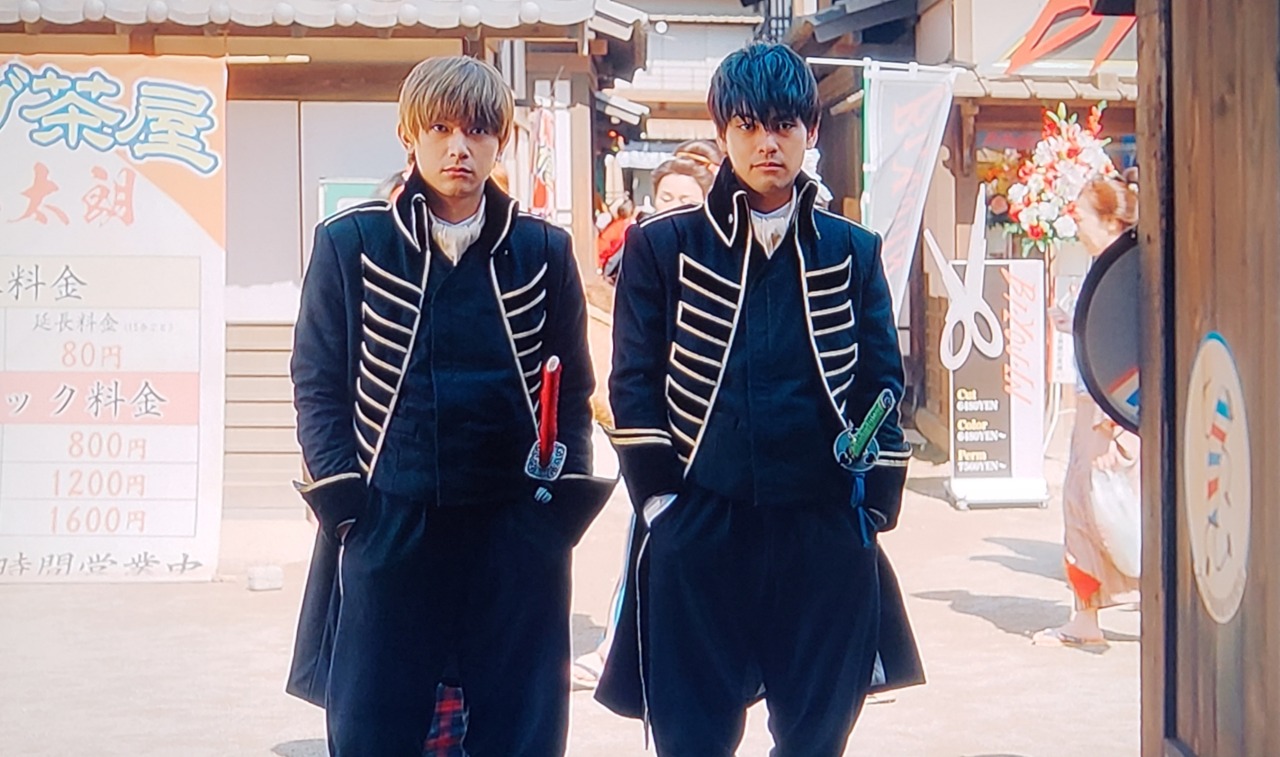

Sadaharu is the only character rendered in CG, and he looks almost exactly like he does in the anime. Most of the Amanto are dressed in costumes and masks instead of being rendered in CG, and that helps them feel more realistic, though it’s sometimes noticeable how limited their mouth movements are. The film also replicates the look of every character and setting as accurately to the anime as possible. Even in supposedly serious moments, the film sprinkles in jokes like Tetsuya yelling all of his lines at the top of his lungs, or Gintoki flippantly shooing away Hijikata to get him to leave the scene.

The filmmaking isn’t afraid to be bombastic and cheesy, with slow-mo close-ups of characters getting their faced punched or dramatic musing underscoring a silly scene. There are scenes with a naked Kondo slathered with honey all over his body, Elizabeth being cut in half and disintegrating, and Kagura barfing a veritable river laugh-worthy without worrying about their realism just like in the anime.

The film holds nothing back in terms of its humor, going as out there and insane with its gross-out gags and pop culture references as possible. Being so faithful to the spirit of the original and so open about what the film is helps ease any apprehensions about the live-action adaptation. Topping it off are lots of fun Easter eggs referencing other characters and events from the series, the design of Gengai’s trash being a personal favorite. Moments of self-reflexivity occur throughout, with a particularly funny discussion centering around how much creepier Elizabeth is in live-action than he is animated. The film frequently breaks the fourth wall to let audiences know it’s self-aware, and jokes about trying to appease newcomers alongside seasoned fans. Every word of Shinpachi’s dialogue is accurate, and every image in the scene mirrors the anime’s version, and the following scene showing Shinpachi and Gintoki’s first meeting in the café is as similarly faithful.
#Gintama live action review series
Its endeavor for fidelity is apparent from the very beginning when we’re treated to a painstaking recreation of the opening prologue that describes the setting of the animated series in early episodes. Instead, the film embraces the spirit of its source material and never loses sight of it throughout its runtime. But rather than working under the limitations of live-action, and trying to change certain characters or story elements to make them more palatable, director Yuichi Fukuda forgoes those considerations entirely. Gintama’s comedy is difficult to replicate in live-action because it’s rarely grounded in something directly relatable. You might be wondering how that’s possible considering the authentic Gintama experience often involves seeing Kondo’s buck-naked hairy ass, and a man draped in a white blanket with a duckbill on it that only speaks by holding up signs.

But it’s one thing for a character in a film to break the fourth wall and make self-aware pop culture references it’s another to have these characters interact with a world that has no semblance of reality in it. Deadpool, its most kindred equivalent in western comic books, was brought to life faithfully in form and function to fantastic results. That isn’t to say its irreverent spirit is inherently impossible to imbue corporeality in live-action. Gintama’s anachronistic setting and self-referential humor defer effort in depicting any sense of realism. What I’m really referring to its artistic functionality. Yes, that should be obvious in the literal sense since both the manga and anime are a series of drawings that tell a story.


 0 kommentar(er)
0 kommentar(er)
